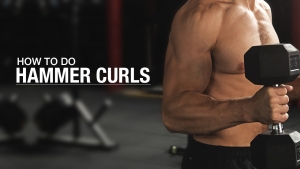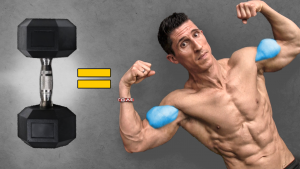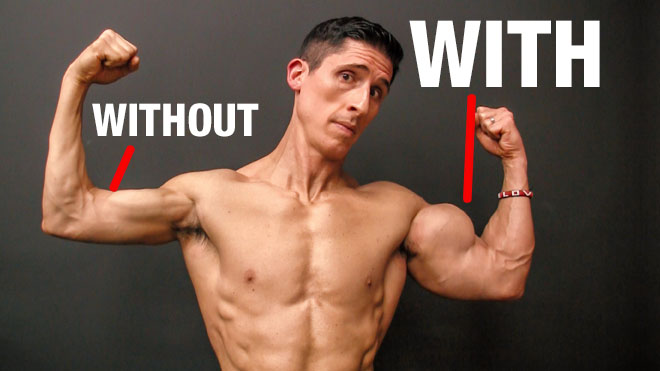
“MY BICEPS AREN’T GROWING…”
Have you ever felt that no matter how much you trained your biceps you’re left saying… “My Biceps STILL Aren’t Growing?”
I believe I know exactly why and I’ll share with you the main reasons why your bicep training is failing you.
Guys, I’ve got to be honest with you here.
When I was younger building big biceps seemed impossible.
I had skinny arms.
At one point they were almost non-existent!
It was through my perseverance in wanting to build bigger biceps that I made a whole hell of a lot of mistakes, but I ultimately wound up being able to increase my arm size and shape thanks to what I learned in the process.
So, what I want to do is help YOU today.
I’ll tell you the two biggest reasons why your biceps aren’t growing and more importantly, I’ll help you fix it by showing you how to get big biceps fast with my 3 best techniques for bigger stronger arms.
2 BIGGEST REASONS YOUR BICEPS WON’T GROW
There are two biceps training mistakes you’re probably making that may be keeping your biceps from growing.
- Many people overtrain the biceps without even realizing it!
- Most people have a lack of variation in bicep training techniques… and I’m not talking about exercises. I mean techniques!
Let’s look at each of these mistakes in a little more detail.
REASON 1: OVERTRAINING IS EASIER THAN YOU THINK…
A common mistake with is to think that more is better when it comes to building bigger biceps. However that’s not the case, especially since it is such a small muscle group.
When training the biceps, the first important thing we need to recognize is that the biceps are pretty limited in terms of their function.
They supinate the forearm, and you can see the bicep activate just by doing this.
FOREARM SUPINATION

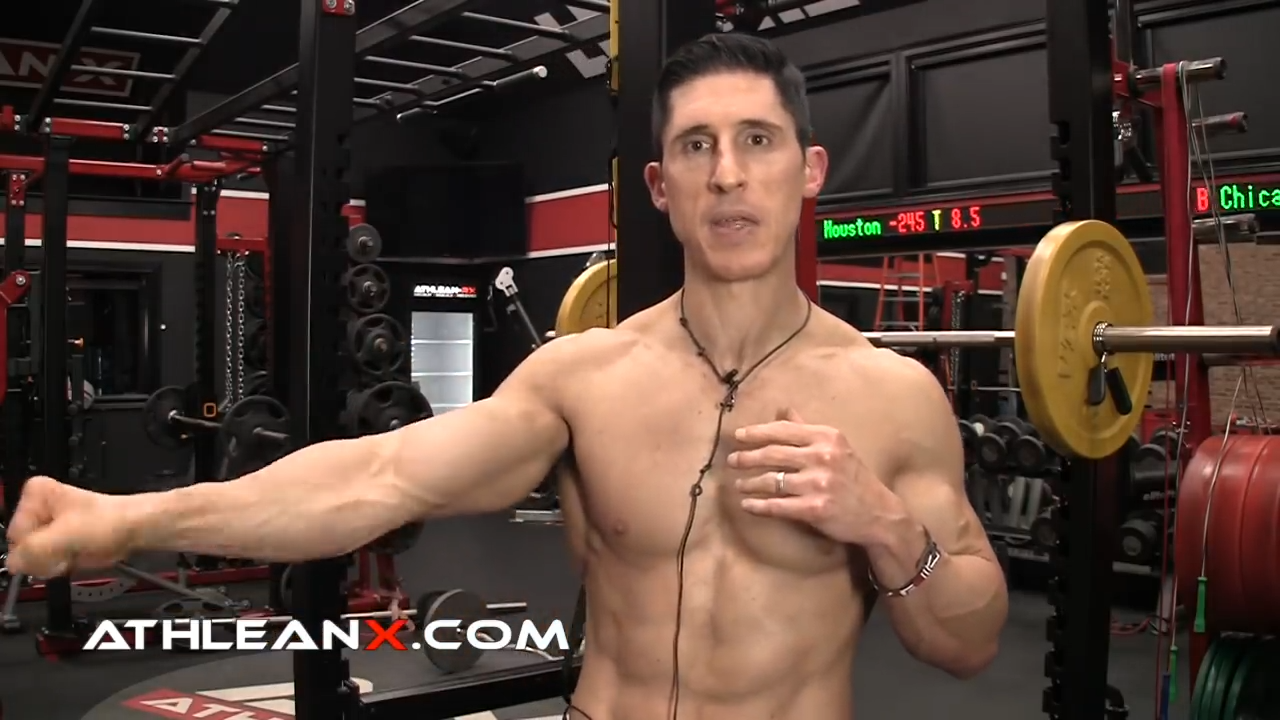
Their biggest driver and function is to flex the elbow because of their attachment at the shoulder.
ELBOW FLEXION

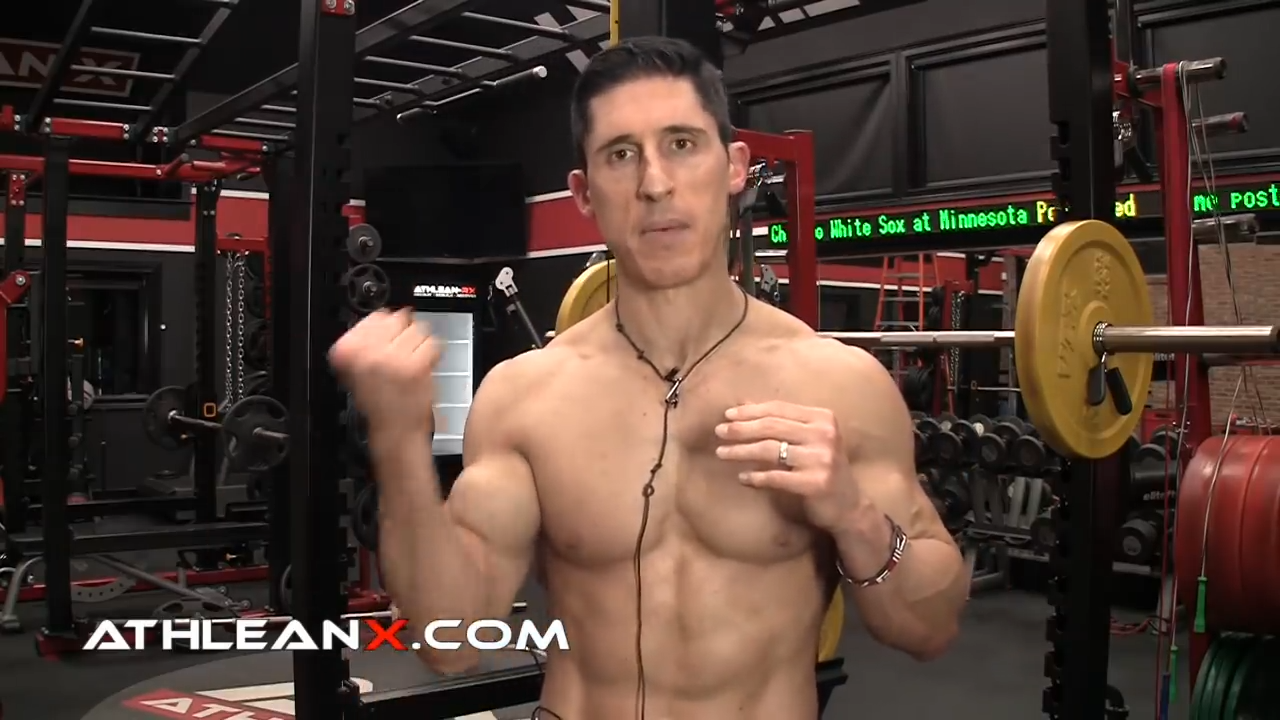
They also have the ability to do some shoulder flexion because of the long head’s attachment at the top of the glenohumeral joint.
SHOULDER FLEXION

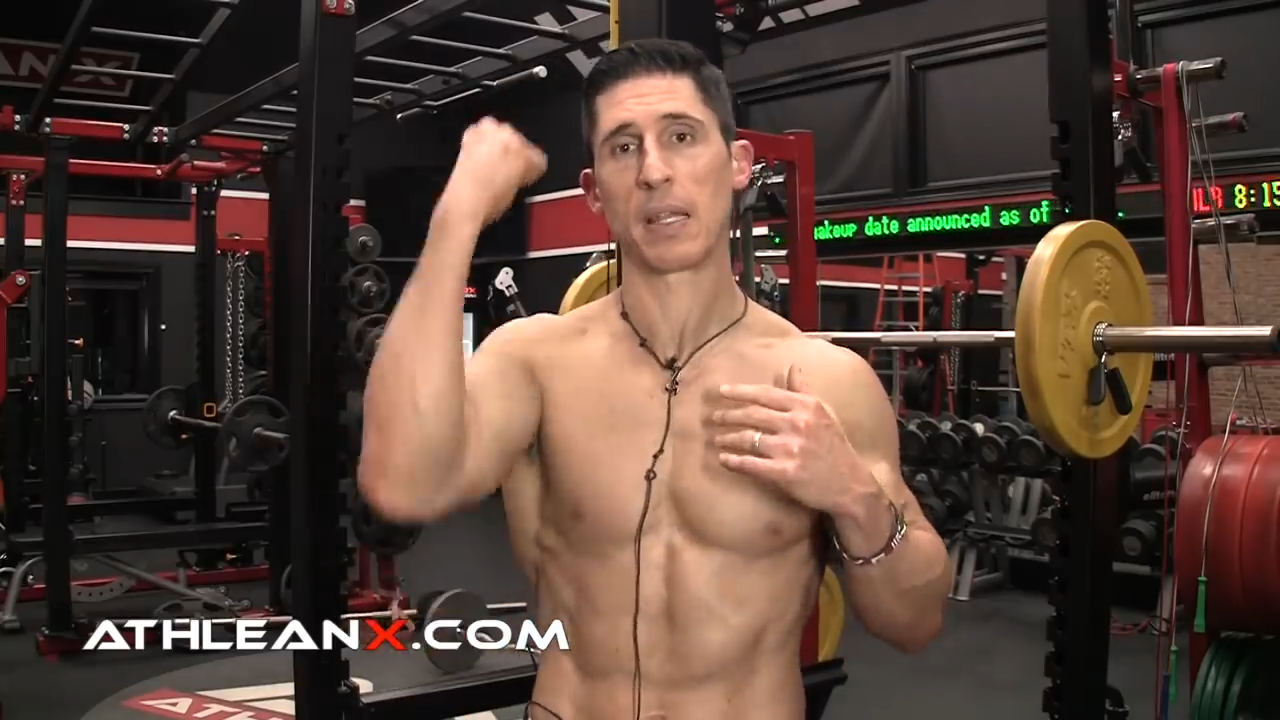
It’s important to realize that any time you’re bending your elbow in any back exercise or anything you do on your upper body pull day including pullups, chin-ups, pulldowns, barbell rows, inverted rows, one-armed rows, you’re also training biceps.
Believe it or not, your biceps are an incredibly small muscle, occupying only a very small portion of the anterior side of your upper arm. Because of all this accessory work, it’s easy to get too much volume in the biceps.
Let’s say you’re training a push, pull, leg split and training each function twice a week. If you throw any exercises for biceps in on top of that you’re actually hitting your biceps three times in that week and you’re not giving them enough time to recuperate.
Many people’s mistake is often to continue to add more and more frequency when you are trying to build bigger arms. The right thing to do is to first step back, take away some volume and frequency and monitor how your body responds.
It’s not about protein synthesis every 48 hours!
It’s about giving that muscle group a chance to recover so that you can stimulate it again in a meaningful way. You don’t want to just coast through another half-assed workout, but actually hit it in a way that leads to progressive overload.
REASON 2: PROGRESSIVE OVERLOAD… YOU’RE DOING IT WRONG!
One of the keys to growing the biceps (or any muscle for that matter) is progressive overload.
Usually this comes in the form of adding weight to the arm exercises that you are doing, and increasing that weight over time.
Progressive overload is the gradual increase of stress placed upon a muscle during training in order to achieve growth.
Some people try to add more and more biceps exercises as a form of stimulus overload to build bigger arms.
But with the biceps this just doesn’t work!
When we’re trying to progressively overload the biceps, it’s important we remember that they are limited in their function.
The biceps have a hinge joint at the elbow that functions primarily to flex and extend the elbow.

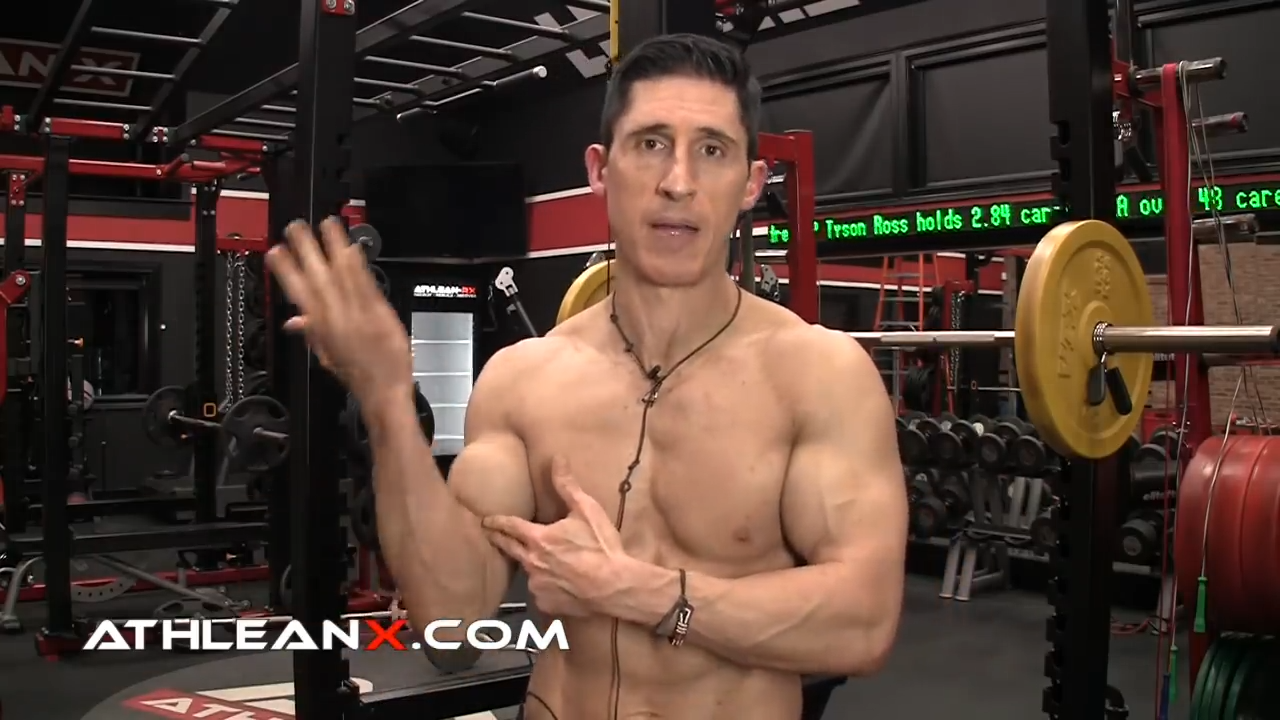
Conversely, the shoulders are a ball and socket joint.

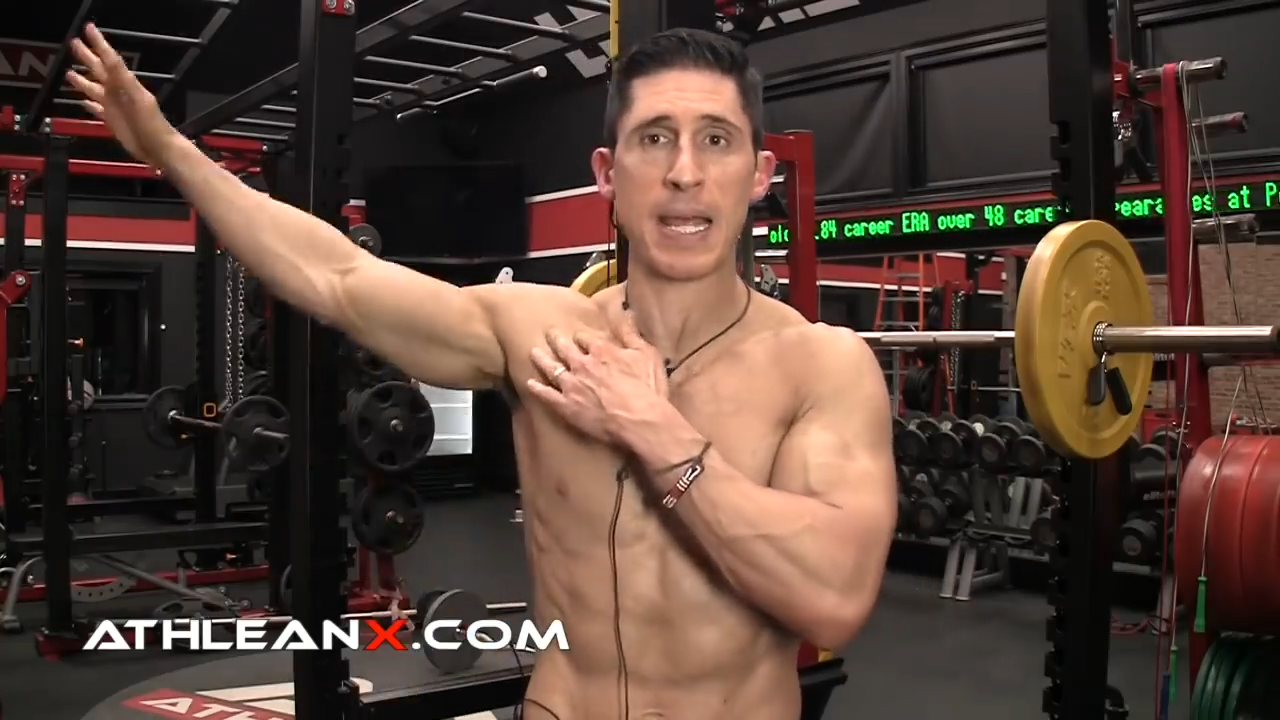
This means that exercise variety for shoulders is a lot greater than what we have for biceps. The shoulder joint has lots of different angles and planes that we can work in because of the variety of movement that the three-dimensional ball and socket joint provides.
Simply put, the hinge joint of the elbow dramatically limits our options for biceps exercises…
To a lot of different curls!
You’re biceps curling with dumbbells, you’re curling with a barbell, you’re curling with a concentration curl, you’re curling with a preacher curl… you’re freaking curling no matter what you’re doing!
Take a look at all of these different types of biceps curls, and you’ll see exactly what I mean!
BARBELL CURL

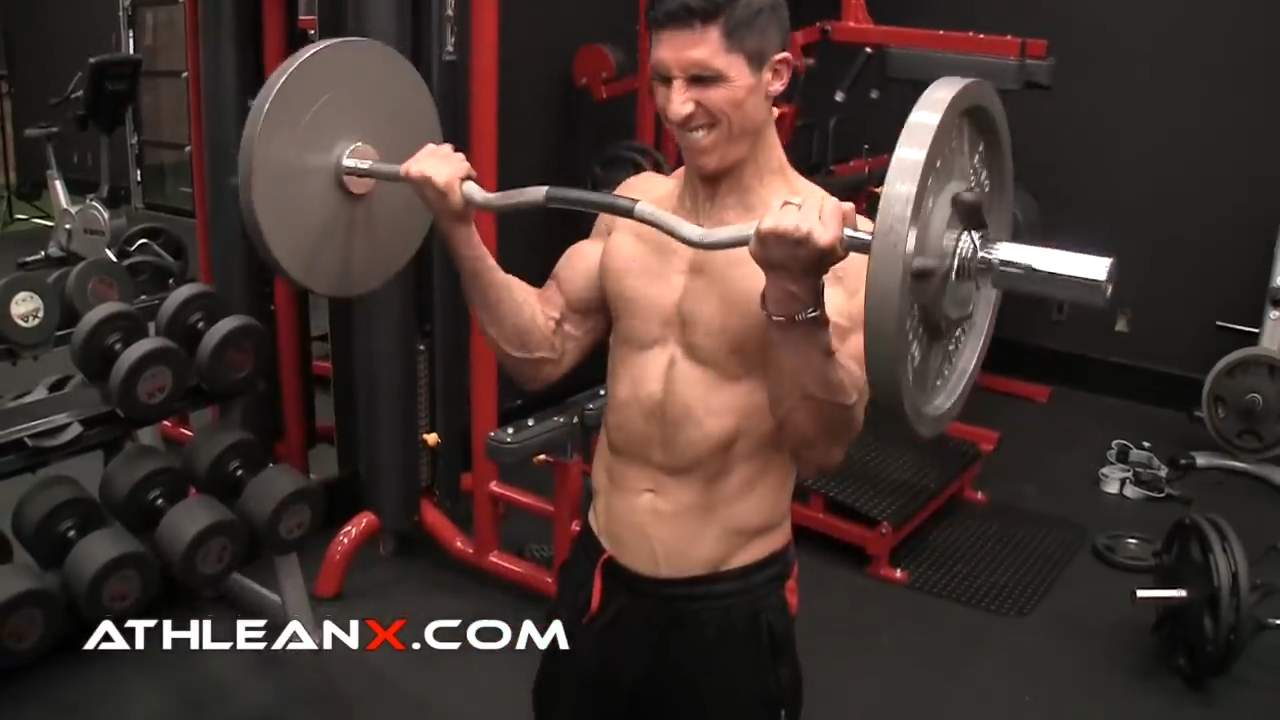
HAMMER CURL

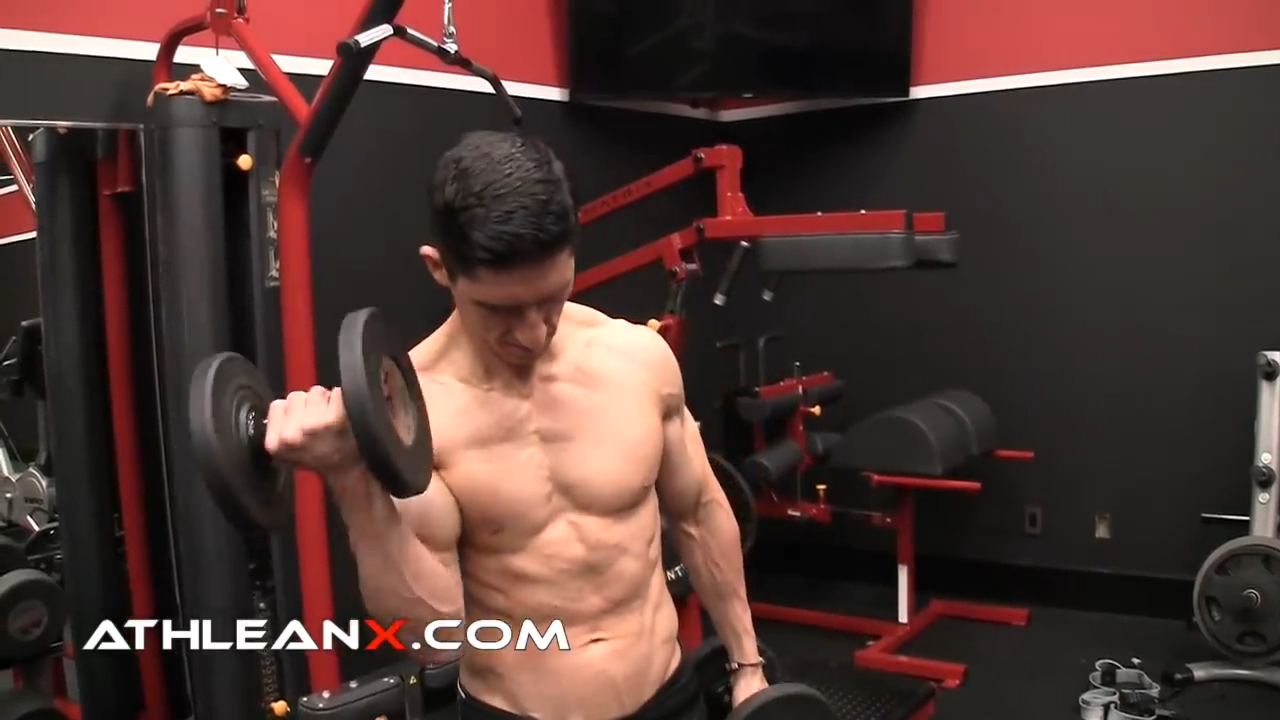
dumbbell PREACHER CURL

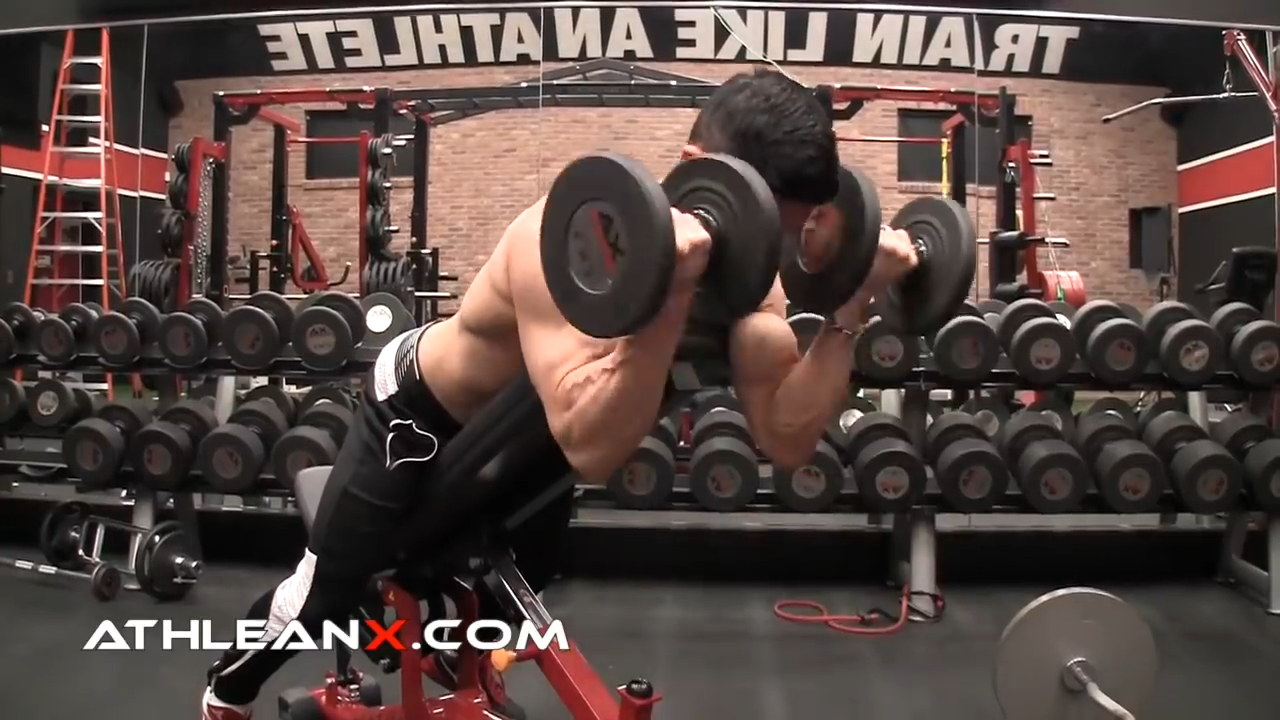
INCLINE CURL

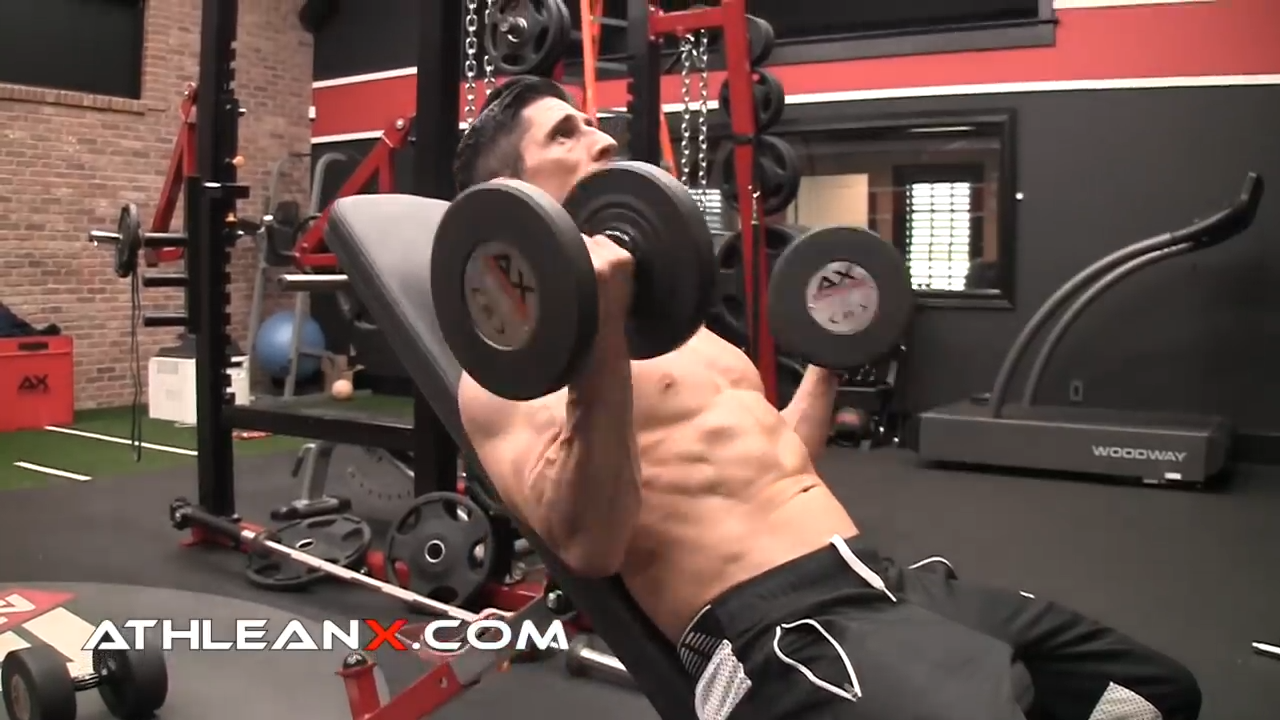
CONCENTRATION CURL

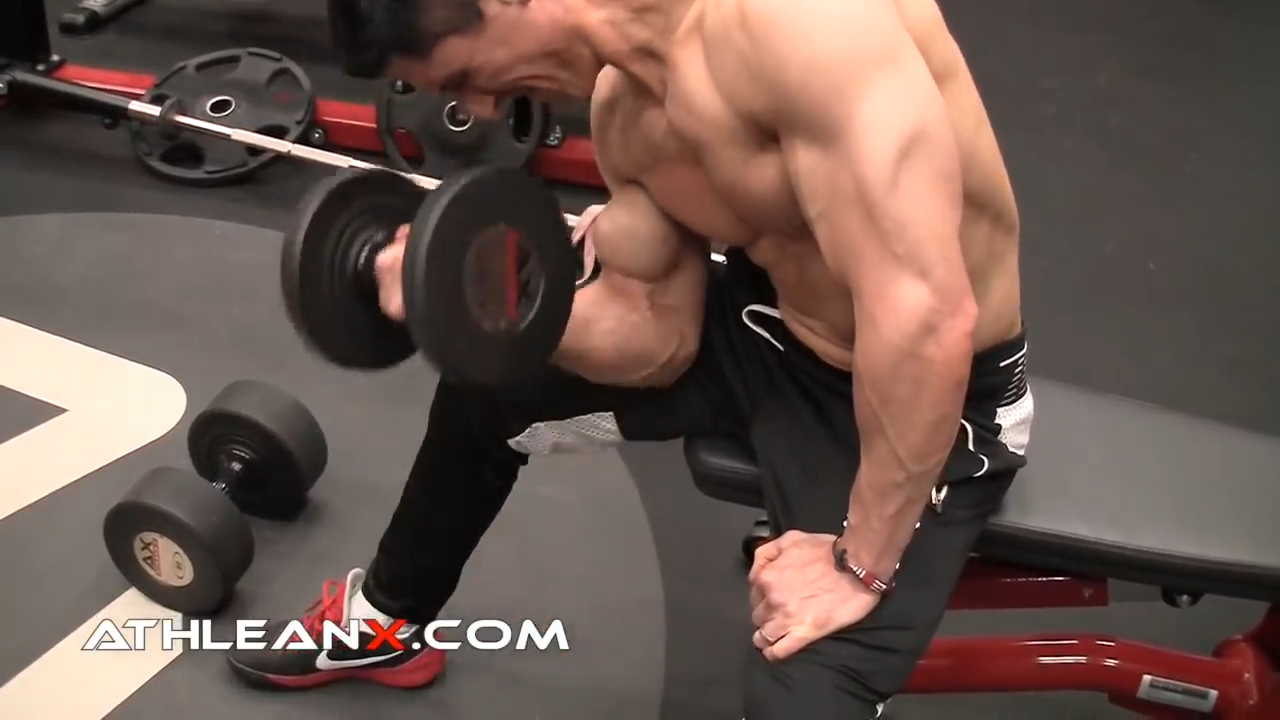
You can see that the idea of switching up bicep exercises to create new overload isn’t going to work, because they’re all basically formed around the same movement at the elbow joint.
Not to mention…
Most of the so-called exercises for bigger biceps are pretty limited in how much we weight we can add to them over time.
When is the last time you actually increased the amount of weight you’ve used on dumbbell curls?
If you have, how much have you really increased?
Progressive overload and overload in and of itself is pretty difficult to achieve with the biceps.
You need to do something dramatically different in your arm workouts to stimulate those muscles, and that is to vary the way in which you’re performing your biceps curls!
3 BICEPS GROWTH TECHNIQUES THAT WORK
Switching techniques is far more effective for biceps growth than adding more and more training days or exercises to your routine.
I’ll show you three of my best training tips to achieve progressive overload in the biceps. The sliced reps technique will give you more time under tension and peak contraction.
The arc variation technique allows you to train to and through failure by manipulating the moment arm of the biceps as you fatigue.
Finally, the In10sity technique will show you how to use heavier weights on your curls and get more high intensity reps completed in a workout.
TECHNIQUE 1: SLICED REPS
This sliced reps technique gives you a great deal of time under tension and time under peak contraction.
This will help you intensify the curl and achieve progressive overload to grow bigger biceps. It’s on of my favorite techniques to apply in dumbbell biceps exercises.
To perform this technique, choose a weight you can normally use for 15 reps. Take an underhand grip and slowly curl the dumbbells all the way to the top. As you lower the weight, drop only 1/9 of the way.
You don’t have to get out your compass or your goniometer to figure out what that is!
Just drop it an estimated 1/9 of the way, and come back up to the top and contract.
On the next rep, drop down a little more to 2/9 of the way, then come back to the top. Then 3/9 and come back to start position. It will take you through all nine levels to get all the way to the bottom of the curl with arm fully extended.
Then you’ll come all the way back up to the top and on the next round you slice it into 8 pieces. The following round is 7 pieces. When you get down to the round with 2 slices, you’re going to slowly lower down halfway, then coming back up to the top, then you’ll go all the way down, and your last rep is one full rep.
SLICED REPS

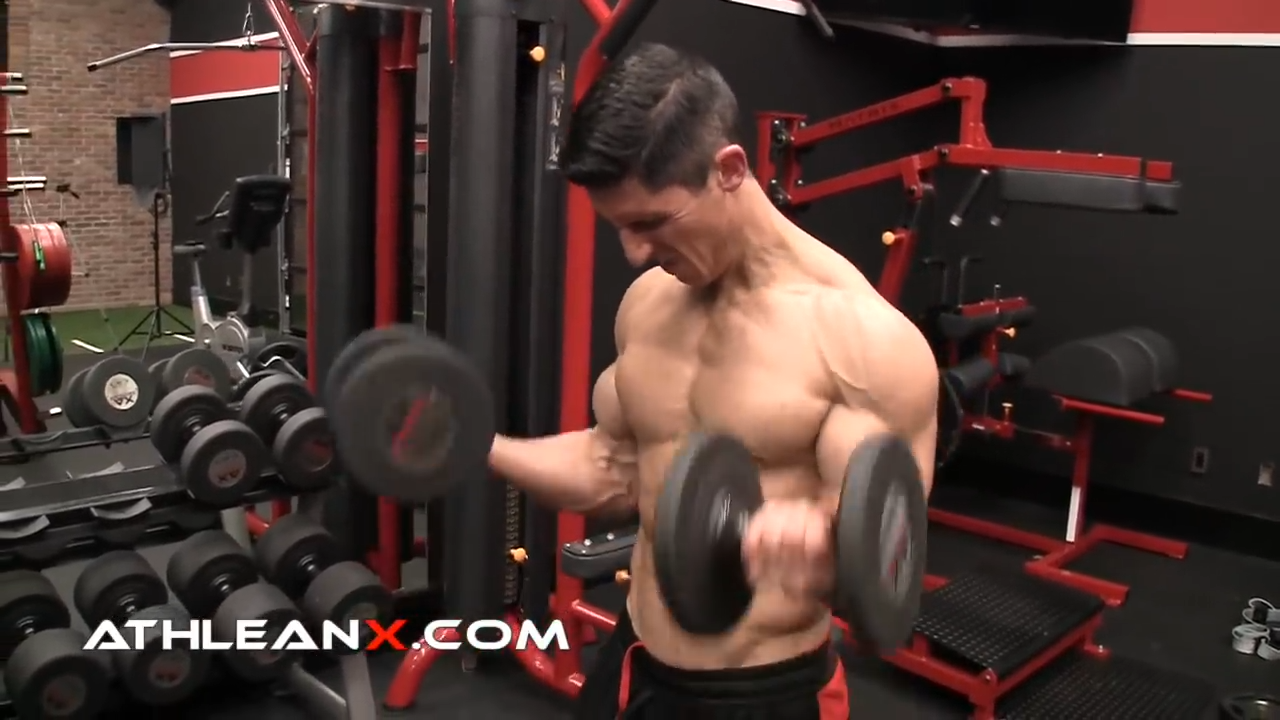
BENEFITS OF THE SLICED REPS TECHNIQUE:
- Increased volume within a set
- Increased number of contractions within in a set
- More time under peak contraction in the curl because we return to it on every slice
- Increased time under tension throughout the course of the set
- Over the course of the ladder, you’re getting full range of motion in the exercise
TECHNIQUE 2: ARC VARIATION
The next technique in my bag of biceps workout tips is arc variation. To understand it, I’m going to give you a short physics lesson.
I promise it will be short!
When we vary the arc of a movement, we can change the moment arm of the elbow joint and increase or decrease the force exerted on the biceps muscle.
What the heck is a ‘moment arm’?
A moment arm is the length between a joint axis and the line of force acting on that joint. The longer the moment arm is the more load will be applied to the joint axis through leverage, and with a shorter moment arm, the load will be less.
So what does this mean when we apply it to our curls?
When you perform a curl keeping your elbows in toward the front side of your ribcage and you use a long and complete range of motion, keeping your forearms as straight as possible, you’ve got a big long arc going.
This long moment arm for the biceps makes that weight feel extremely heavy and puts a great challenge on the biceps.
Once you hit fatigue, you don’t have to stop. Instead, you’ll bring your elbows in to your sides and continue pushing out reps. You’ve shortened that moment arm, effectively lightening that weight in your hands to allow you to keep going.
CHANGING THE MOMENT ARM


Then we can drop our arms back even more into a drag curl variation that really shortens the moment arm on the biceps. Not only that, it changes the strength curve of the exercise, so the most difficult part isn’t in the middle of the exercise, but instead at the peak contraction of the exercise.

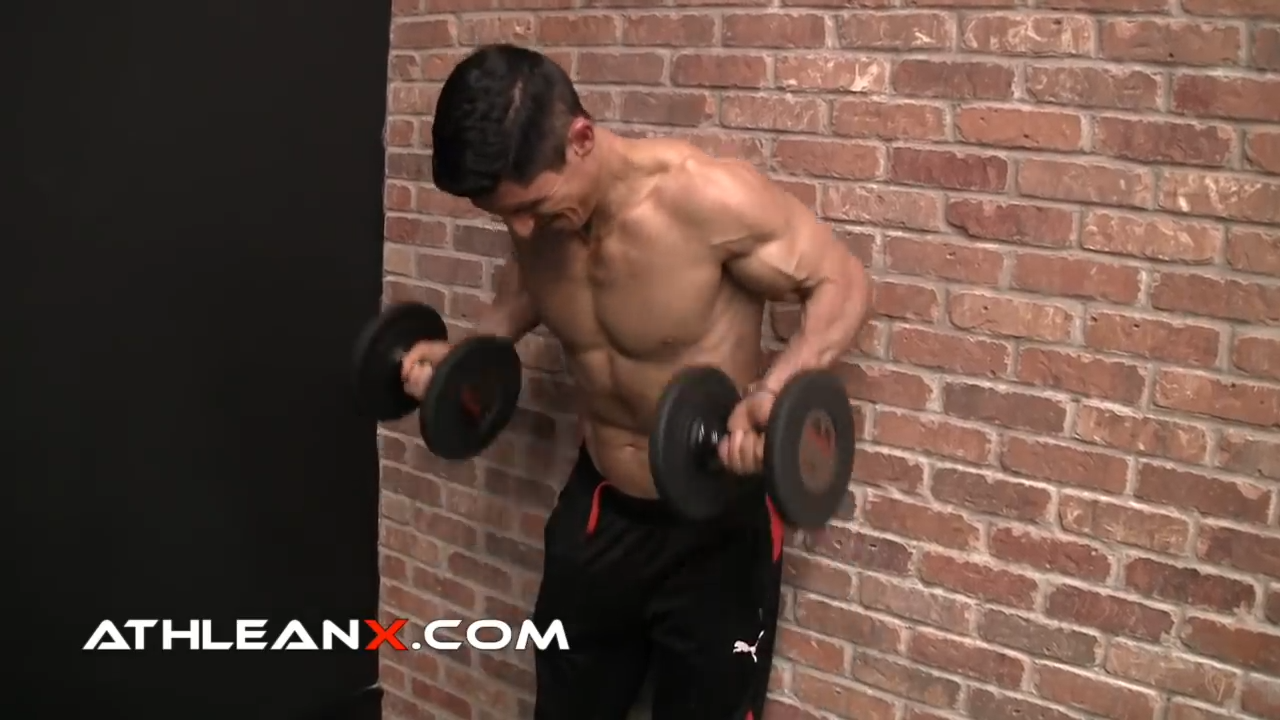
BENEFITS OF THE ARC VARIATION TECHNIQUE
- Manipulates the moment arm of the biceps as you fatigue
- Intensifies the curl by allowing you to train to and through failure
- The drag curl version changes the strength curve of the exercise to occur at peak contraction instead of at the middle
TECHNIQUE 3: IN10SITY
My next expert tip for bigger strong biceps is the In10sity technique. It allows you to increase the amount of productive reps you’re performing while lifting heavy.
To perform this technique we’ll first choose a weight that will allow us to get to failure in the five or six rep range. Then we rest pause for 10 seconds.
We don’t put the weight down.
We just rest pause, holding the bar.
You’ll see that after about 10 or 15 seconds you can crank out another three reps. Then you rest again 10 to 15 seconds, and try for another two or three reps. Then ultimately you’re getting into single reps.
If you do this for a five minute period of time, when you count the number of high intensity reps that you did with heavier weight in one five minute set, it’s going to be more than you probably did when you broke your sets up into the traditional three sets of 12.
IN10SITY


BENEFITS OF THE IN10SITY TECHNIQUE
- Allows for use of heavier weights on your curls
- Accumulates more high intensity reps in a workout than a typical 3 sets of 12
Remember, it’s not varying your exercises, adding isolation exercises or adding additional focused biceps days that will force the biceps to grow. In fact, these things may work against you! Instead, it’s the variation of the intensity techniques you’re using on those bicep exercises that will matter the most.
As far as frequency goes, dial it back and see how you do. I promise you, you’ll probably see a better result from doing that than you will by adding more and more workouts.
The exercises by themselves NEVER make a workout complete. If you are looking for a program that takes you step by step to your fastest and best gains ever with all the sets, reps and TECHNIQUES that produce the fastest results check out our ATHLEAN-X programs.
Program Selector ==> See which program best fits your goals
AX1 ==> Train at Home With Dumbbells and Minimal Equipment
Ultimate Arms ==> Complete program that adds a special focus on those guns

- There are two main training errors people make that keep their biceps from growing. These are overtraining the biceps (often unintentionally) and a lack of variation in training techniques.
- Adding additional biceps focused workouts and trying multiple biceps exercises doesn’t work. The biceps muscle is a hinge joint, so all biceps exercises are essentially just curls.
- For this reason, changing techniques is a better strategy for biceps growth than adding training days or additional exercises.
- There are three biceps training techniques that do work well to create progressive overload and grow the biceps. They are sliced reps, arc variation and in10sity.

Jeff Cavaliere M.S.P.T, CSCS
Jeff Cavaliere is a Physical Therapist, Strength Coach and creator of the ATHLEAN-X Training Programs and ATHLEAN-Rx Supplements. He has a Masters in Physical Therapy (MSPT) and has worked as Head Physical Therapist for the New York Mets, as well as training many elite professional athletes in Major League Baseball, NFL, MMA and professional wrestling. His programs produce “next level” achievements in muscle size, strength and performance for professional athletes and anyone looking to build a muscular athletic physique.


































